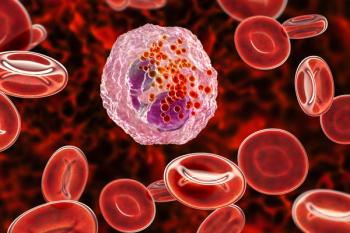
|Articles|April 1, 2022
Daily Medication Pearl: Ganciclovir Ophthalmic Gel
Author(s)Saro Arakelians, PharmD
Ganciclovir ophthalmic gel (Zirgan) is a topical ophthalmic antiviral that is indicated for the treatment of acute herpetic keratitis (dendritic ulcers).
Advertisement
Medication Pearl of the Day: Ganciclovir ophthalmic gel (Zirgan)
Indication: Ganciclovir ophthalmic gel (Zirgan) is a topical ophthalmic antiviral that is indicated for the treatment of acute herpetic keratitis (dendritic ulcers).
Insight
- Dosing: The recommended dosing regimen for Zirgan is 1 drop in the affected eye, 5 times per day (approximately every 3 hours while awake) until the corneal ulcer heals, and then 1 drop 3 times per day for 7 days.
- Dosage forms: Zirgan contains 0.15% of ganciclovir in a sterile preserved topical ophthalmic gel.
- Adverse events: Most common adverse reactions reported in patients were blurred vision (60%), eye irritation (20%), punctate keratitis (5%), and conjunctival hyperemia (5%).
- Mechanism of action: Zirgan contains the active ingredient, ganciclovir, which is a guanosine derivative that, upon phosphorylation, inhibits DNA replication by herpes simplex viruses. Ganciclovir is transformed by viral and cellular thymidine kinases to ganciclovir triphosphate, which works as an antiviral agent by inhibiting the synthesis of viral DNA in 2 ways: competitive inhibition of viral DNA-polymerase and direct incorporation into viral primer strand DNA, resulting in DNA chain termination and prevention of replication.
- Manufacturer: Bausch + Lomb
Sources
Newsletter
Stay informed on drug updates, treatment guidelines, and pharmacy practice trends—subscribe to Pharmacy Times for weekly clinical insights.
Advertisement
Latest CME
Advertisement
Advertisement
Trending on Pharmacy Times
1
Trump Announces Pricing Deals With 9 Drugmakers, Expanding Most-Favored-Nation Drug Pricing Strategy
2
The ABCs of Vitamin D Supplements: Exploring Their Health Benefits and Proper Use
3
FDA Approves Nerandomilast for Progressive Pulmonary Fibrosis
4
Occupational Factors Can Increase Risk of Long COVID
5







































































































































































































